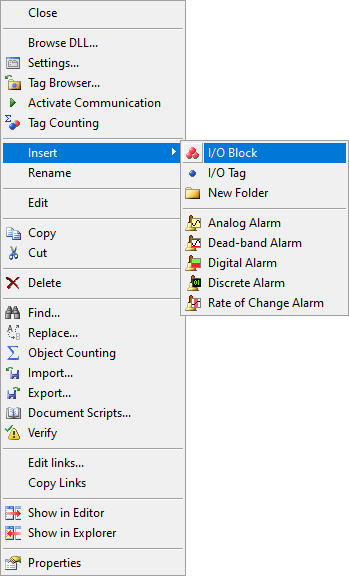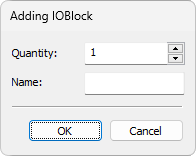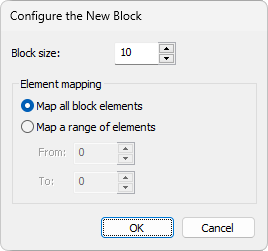I/O Blocks are used to define information exchange with an acquisition device, which consist of one or more variables, if they are consecutive in an addressing inside an external device.
Depending on the communication method used, users can save time in communication, thus obtaining a larger number of updates at the same time interval, when compared to an I/O Tag. I/O Blocks are configured using a series of B parameters, from B1 to B4, which vary according to the I/O Driver used, along with the Size property, which defines the number of I/O Block Elements or indexes available in an I/O Block. To use this resource, follow these procedures:
1.Right-click an I/O Driver and select the Insert - I/O Block option.

Inserting an I/O Block
2.The window on the next figure is opened asking for the number of I/O Blocks to create in this I/O Driver, as well as their names. This name is auto-incremented and if this option remains blank, I/O Blocks are created with a default name.

Adding IOBlock window
3.The dialog box on the next figure is displayed to determine the number of I/O Block Elements in this object. In this option, users can indicate a mapping for all I/O Block Elements in an I/O Block or in a given I/O Block Element's interval.

Configure the New Block window
4.Inform the size for this I/O Block and its mapping options.
5.Click OK.
6.If necessary, configure this object's properties.
Some properties in I/O Blocks can be configured using Properties List, and there is no need to create scripts for this. To configure any property, locate it on Properties List and perform the necessary adjustments. The description of the properties of this object can be found on the Elipse E3 Reference and Scripts Manual.